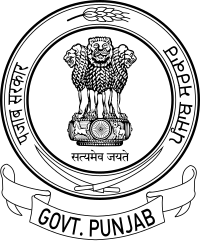
The State Emblem of India is the national emblem of the Republic of India and is used by the union government, many state governments, and other government agencies. The emblem is an adaptation of the Lion Capital of Ashoka, an ancient sculpture dating back to 280 BCE during the Maurya Empire. The statue is a three dimensional emblem showing four lions. It became the emblem of the Dominion of India in December 1947, and later the emblem of the Republic of India. The State Emblem of India is an official seal of the Government of India. It is used as the national emblem of India and appears on official documents, currency and passports.

East Punjab was a province of India from 1947 until 1950. It consisted parts of the Punjab province that remained in India following the partition of the province between the new dominions of Pakistan and the Indian Union by the Radcliffe Commission in 1947. The mostly Muslim western parts of the old Punjab became Pakistan's West Punjab, later renamed as Punjab Province, while the mostly Hindu and Sikh eastern parts remained with India.
Punjab is home to 2.3% of India's population; with a density of 551 persons per km2. According to the provisional results of the 2011 national census, Punjab has a population of 27,743,338, making it the 16th most populated state in India. Of which male and female are 14,639,465 and 13,103,873 respectively. 32% of Punjab's population consists of Dalits. In the state, the rate of population growth is 13.9% (2011), lower than national average. Out of total population, 37.5% people live in urban regions. The total figure of population living in urban areas is 10,399,146 of which 5,545,989 are males and while remaining 4,853,157 are females. The urban population in the last 10 years has increased by 37.5%. According to the 2011 Census of India, Punjab, India has a population of around 27.7 million.
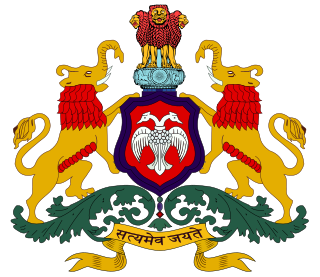
The Emblem of Karnataka is the state emblem of Karnataka, India. The emblem is based on that of the Kingdom of Mysore is carried on all official correspondences made by the Government of Karnataka.

The Emblem of Sikkim is currently used as the official seal of the Government of Sikkim, India. It was earlier used as the coat of arms of the House of Namgyal and the Kingdom of Sikkim. The emblem is known as the Kham-sum-wangdu. It was designed in 1877 by Robert Taylor.

The Emblem of Tamil Nadu is the official state emblem of Tamil Nadu and is used as the official state symbol of the Government of Tamil Nadu.
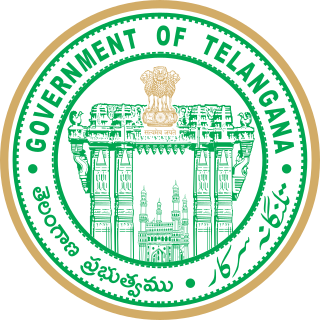
The Emblem of Telangana is the state emblem of Telangana in South India. The arms has the Kakatiya Kala Thoranam in the middle, and the Charminar inside it and bordered in green.

The Emblem of Uttarakhand is the official state seal used by the Government of Uttarakhand and is carried on all official correspondences made by State of Uttarakhand. It was adopted by the newly formed Interim Government of Uttarakhand at the establishment of the state on 9 November 2000.

The Emblem of Uttar Pradesh is the official seal of the government of the Indian state of Uttar Pradesh. The emblem was originally designed in 1916 for the then United Provinces of Agra and Oudh and continued in use following Indian Independence in 1947.

The Emblem of Chandigarh is the official seal of the government of the Indian union territory of Chandigarh.
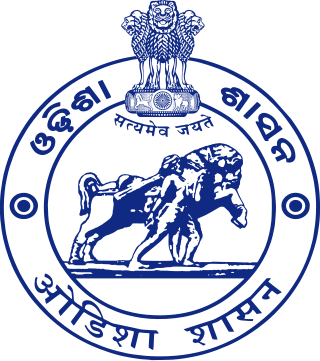
The Emblem of Odisha is the official seal of the government of the Indian state of Odisha.

The Emblem of Himachal Pradesh is the official state seal used by the Government of Himachal Pradesh and is carried on all official correspondences made by State of Himachal Pradesh. It was adopted by the Government of Himachal Pradesh at the establishment of the state on 25 January 1971. The State of Himachal Pradesh has an Emblem consisting of a mountain ridge over three white fesses, charged with the Aśoka capital.

The Emblem of Chhattisgarh is the official seal of the government of the Indian state of Chhattisgarh. It was adopted on 4 September 2001 when Chhattisgarh state was formed from part of Madhya Pradesh.
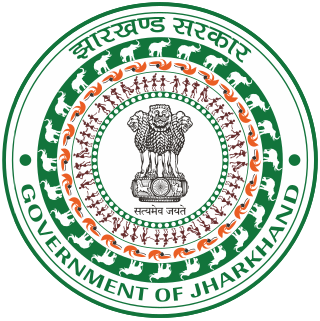
The Emblem of Jharkhand is the official seal of the government of the Indian state of Jharkhand.

The Emblem of Madhya Pradesh is the official seal of the government of the Indian state of Madhya Pradesh.

The Emblem of Haryana is the official seal of the government of the Indian state of Haryana.

The Emblem of Meghalaya is the symbol used to represent the government of the state of Meghalaya, India.
